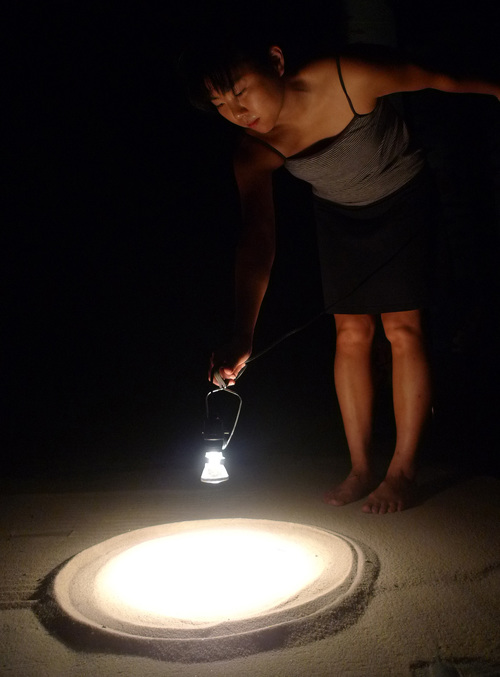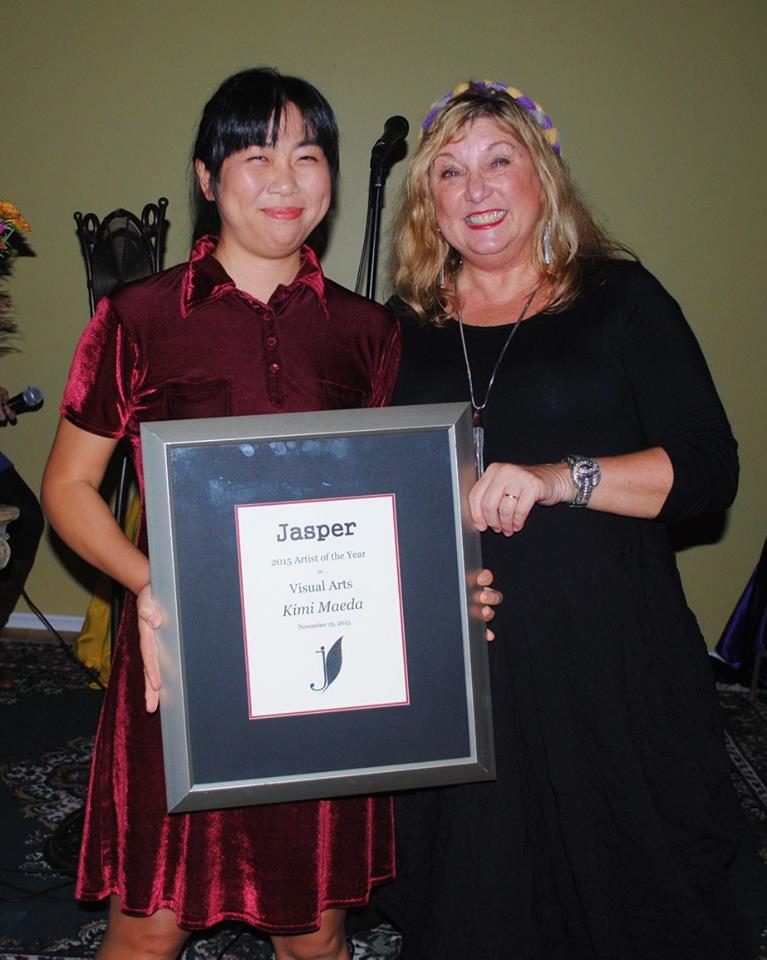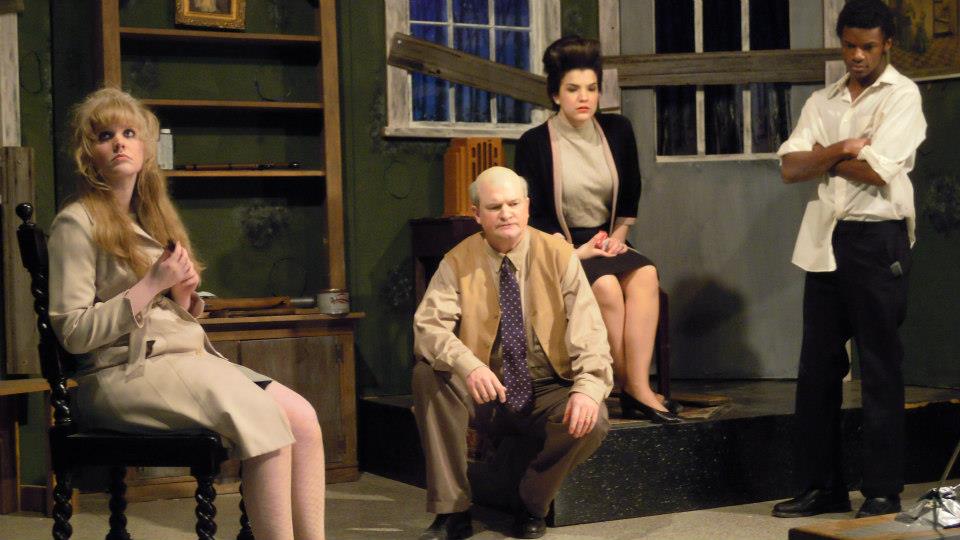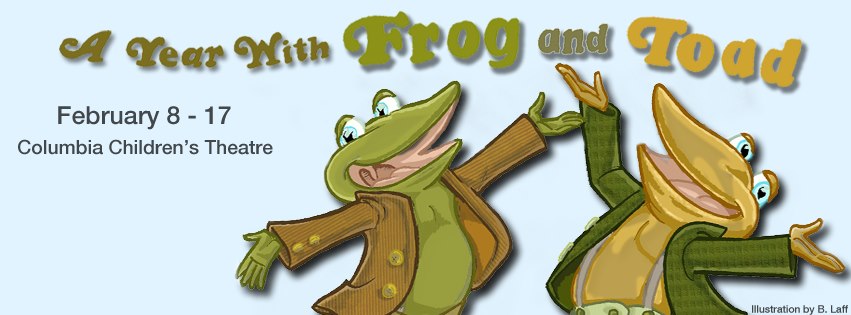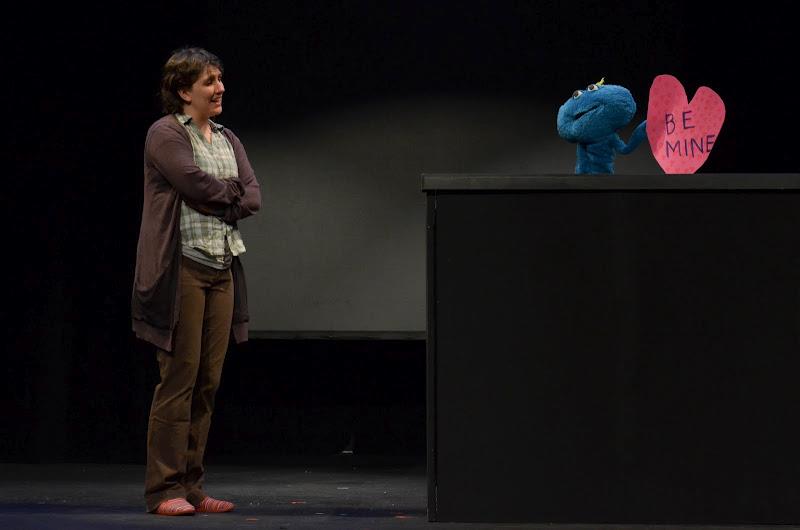Ephemera (noun):
- things that exist or are used or enjoyed for only a short time.
- items of collectible memorabilia, typically written or printed ones, that were originally expected to have only short-term usefulness or popularity.
"The year the law of gravity was abolished the moon wandered away. In the excitement we didn't notice that the Nakashimas disappeared. You had to hold on tight or things floated off. I suppose they never really put down solid roots." –Kimi Maeda
It’s difficult to leave a performance of Kimi Maeda’s Ephemera Trilogy, which runs through May 7th in the Trustus Side Door Theatre, without your head buzzing with questions. What is the relationship between storytelling and art, art and memory, memory and identity, identity and truth?
Maeda is not offering up answers, of course, but is certainly providing provocative new ways of tackling these questions. Her work is deeply invested in interrogating the act of storytelling itself, of how we come to know ourselves through creative expression, with all of its messy contours and murky revelations. Using stories of her parents (and, perhaps more to the point, the stories they have told her) as logical guideposts to understanding herself, Maeda’s work is grounded in sorting through the thorny reality that the telling of a story is an ephemeral act and, yet, also the fundamental way we come to make sense of our memories and ourselves as people. Each section of Ephemera, which was developed over a period of six years, employs a different stunning and innovative method of telling a story, each of which foregrounds its storytelling artifice while at the same time reaching for something that feels true, that feels real, in the process.
In the first part of Ephemera, “Homecoming,” Maeda uses a flashlight to bring paper cutouts to life as she ponders questions about her parent’s homes as well as the kind of fables and myths we all tell about home, what it’s supposed to say about who we are. The idea is that how we think about home is a kind of storytelling in and of itself. Maeda is both fascinated and distrustful of these questions, and you can sense that lack of sureness in both the pre-recorded narrative and the ever-so-slight shake of the flashlight as she moves across and through the miniature tableaux and brings it to life. This story doesn’t, can’t, exist without Maeda there, providing that thin light and fragile movement necessary to make sense of this piece of visual art. This phenomenon is something that occurs in each of the sections, a kind of implicit recognition that how both viewer and artist are being swayed and prodded by a distinct viewpoint, one that only exists in precisely this way in this one particular moment in time. Each performance, then, is a reminder of both the power of storytelling and its ephemeral, magical nature.
The second section, “The Crane Wife,” has Maeda performing elegantly wrought shadow puppetry as she weaves together the story of her mom coming to America from Japan with an old Japanese folktale. Framed by (real?) historical letters that Maeda pens and reads aloud in real-time, the interpretation of the crane wife tale she tells becomes intertwined with how the artist understands her Japanese-American identity. Maeda renders it lovingly. She also ponders the story’s intrinsic message about sacrifice and feminism, testing what identifications she has with the story and the limits to which it can function as a genuine link to her Japanese heritage. That a folktale like “The Crane Wife” is endlessly told and retold, revised and reshaped, makes such tests of authenticity quite fraught. Yet this particular version will always have meaning for Maeda and her mother, will structure their identities and how they understand themselves. It’s an ancient practice of making new.
The final section, “Bend,” uses archival footage of Maeda’s father, suffering from dementia, and the famous Japanese sculptor, Isamu Noguchi, both of whom were assigned to the same Japanese internment camp in 1942 -1943. This footage and audio, which often features Maeda talking with her father about the past, is juxtaposed and blended with live sand drawings of figures and places, memories and fragments that are constantly erased, literally disappearing as Maeda draws over or sweeps them away with a broom the last image to make way for the next one. The idea of Maeda’s father, who is clearly a man of extraordinary intellect, warmth, and ambition having to grapple with his own shifting sands of memory makes this method of storytelling particularly significant and brings home the reality of the ephemeral nature of both memory and art.
These are by necessity brief and incomplete descriptions of what goes told through the incredibly innovative and evocative visual language that Maeda uses, but what’s even more difficult to translate is the sheer creativity at the heart of it all. The way she uses light and crumbled papers to conjure up a fire, the way layers of design and shadow move us through airports and palaces and soar us through the sky or into the interior of phone lines in “Homecoming.” The casual virtuosity of the shadow puppet illustrations of “The Crane Wife” that feel more keenly alive than any picture book. And perhaps most profoundly, the unusual framing and living transitions that exist over the course of one of her many sand drawings, each of which is remarkable in each distinct moment. It’s wholly distinct and different from simply watching a painter paint or an illustrator draw. I can’t help but think about a performance like this in spiritual and ritual terms, of finding some solace, some beauty, and some redemption in these symbolic and repetitive acts. Ritual is something that keeps tradition alive even as it changes, that gives us new spins on ancient questions, and that remind us all that all creative acts are storytelling ones, each with their fair share of an older narrative inextricably grafted to a new thread.
To that end, art-as-ritual, or storytelling-as-ritual, or perhaps even storytelling-as-truth, feels at the heart of Maeda’s trilogy. Our stories are who we are. Even if there is something lost in translation, there is also something invented, something new, something you.
And I can’t say that everything I pulled out of her Ephemera Trilogy is what Maeda necessarily intended. But I can without qualification say that such a rich, nuanced, and simply extraordinary piece of artwork is a treasure that contains multitudes and is very much worth spending your time with.
https://vimeo.com/110097232




